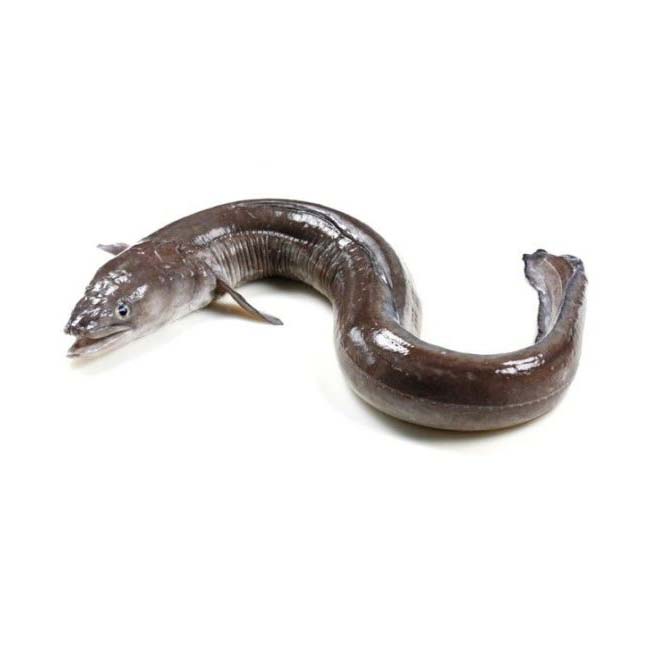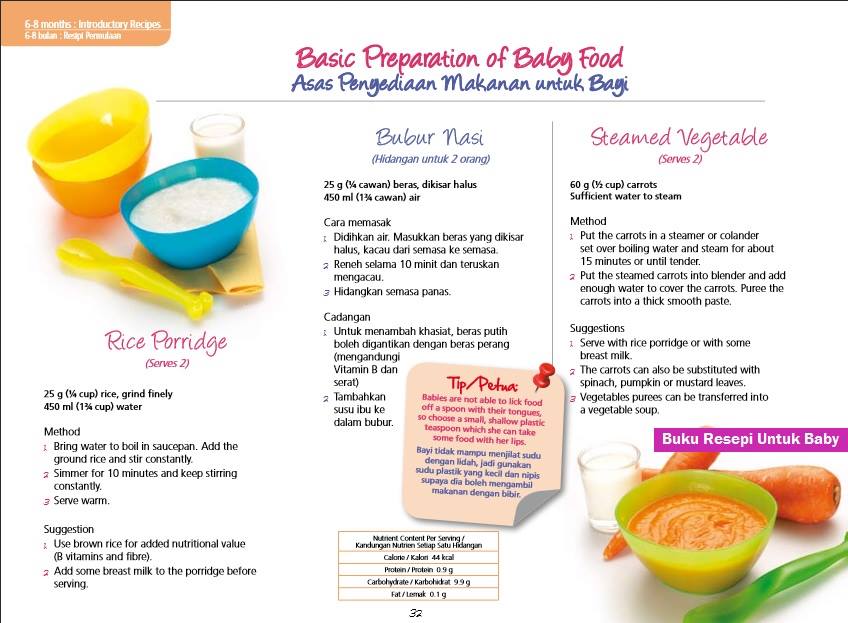Beginner finger foods for baby
Best Early Finger Foods for Baby (With Tips, Visuals, and Recipes)
Use this list of safe, nutritious, and easy to eat finger foods for baby to help you know exactly what (and how) to offer at meals and snacks. Plus, find the best first finger foods, troubleshooting tips, and visuals of foods broken down by food group to keep things easy!
Finger Foods for Baby
After baby starts solids and is ready to move onto finger foods, you may feel a little confused by exactly what to serve and how to serve it. Which is totally normal because it can be scary to let baby feed themselves this way and we may not have any experience doing this—or we may have totally forgotten from our last kiddo!
This list of finger foods for baby will cover some great first finger foods to start with, then set you up with plenty of healthy options from each food group.
TIP: Find more info on starting solids here and the best foods to start with if doing baby led weaning or purees with baby.
Healthy Baby Food
I love sharing these ideas for baby food since they are easy to prepare and serve and because I know how hard it can be to continue to come up with flavorful and healthy meals and snacks for our little ones. Let me tell you, I’m on my third kiddo and it can be such a challenge to feed him during the chaos of parenting the rest of my crew! These foods are wholesome and nutritious—perfect for your baby.
TIP: I’m a big fan of SpoonfulONE, a company that offers the most complete way to introduce food allergens to our kids. They make mix-ins, puffs, and crackers that are yummy and easy for babies and toddlers to eat. Learn more about their pediatrician-approved baby foods here. (sponsored link)
Best First Finger Foods
When baby is around 9 months, you’ll notice that they’re able to pick up smaller pieces of food with two fingers. This is known as the “pincer grasp” and is a sign that they’re ready to start finger foods. To be clear, when I say “finger foods” I mean small pieces of food that a baby (or toddler) can feed themselves.
To be clear, when I say “finger foods” I mean small pieces of food that a baby (or toddler) can feed themselves.
Here are some of my favorite ones to start with that are all super soft, safe to eat, and easy to pick up.
- Scrambled egg, broken up into small pieces
- Roasted sweet potato mashed and broken up into small pieces
- Fresh raspberries, broken up into smaller pieces
- Oatmeal, cooked according to package directions and allowed to cool
- Tofu, diced and sauteed lightly or steamed
- Ground beef, chicken, or turkey, broken up into small pieces or lightly mashed meatballs
- Shredded cheese or crumbled goat cheese
- Mashed sweet potato, in little pieces
- Peanut butter puffs
TIP: You can serve the tofu, ground meat, or meatballs in veggie puree from a pouch or a simple marinara sauce for extra moisture and flavor. Learn more about how and why to introduce peanut butter.
Finger Foods for Baby: Fruits and Veggies
Some of my favorite early fruits and veggies to serve babies are:
- Mashed roasted sweet potato, broken up into small pieces
- Warmed frozen peas, slightly mashed if desired
- Roasted Zucchini
- Diced Roasted Sweet Potato or Butternut Squash
- Fresh blueberries, cut in half or quarters
- Fresh raspberries, broken into small pieces
- Banana, broken into small segments (they are less slippery this way versus slicing them)
- Avocado, diced and mashed slightly (be sure it’s ripe and very soft)
TIP: A good rule of thumb is to serve pieces of food that are about the size of a pea to start and soft enough that they are easy to squish between your fingers. This will be easy for baby to pick up and eat and will also reduce chances of choking.
This will be easy for baby to pick up and eat and will also reduce chances of choking.
Finger Food Ideas: Carbohydrates
Offering complex carbohydrates can provide fiber, a variety of textures, B vitamins, and more. Try these with your baby.
- Spinach pancakes (moisten with applesauce or plain yogurt if needed; this recipe is particularly moist and great for babies)
- Oatmeal, cooked according to package directions and allowed to cool
- Baby Puffs
- Peanut Butter Puffs
- Rice (it’s easiest if it’s in little clumps so baby can pick it up; this Coconut Rice or this Cheesy Rice are both good options)
- Baby Banana Muffin
- O cereal (soften in nondairy unsweetened milk or yogurt as needed)
- Baked Oatmeal, diced
Finger Food Ideas: Proteins
Offering proteins will continue to expose baby to a range of nutrients. These are my go-tos for babies newer to finger foods—and toddlers too.
- Shredded cheese (thicker cuts are a little easier to pick up)
- Tofu, diced and sauteed lightly or steamed
- Flaked cooked wild salmon
- Lightly mashed meatballs
- Shredded chicken, cut up finely (we love this Butter Chicken to share with baby)
- Ground beef, turkey, or chicken, broken into smaller pieces
- Lightly mashed beans
- Scrambled eggs, broken up into small pieces
- Diced egg muffins
I’d love to hear any questions you may have, or if you have foods that your babies enjoy that I didn’t include here.
 Chime in below in the comments!
Chime in below in the comments!Prep Time 5 minutes
Cook Time 5 minutes
Total Time 10 minutes
Author Amy Palanjian
Cuisine American
Course Baby Food
Calories 124kcal
Servings 1
First Finger Foods (choose 1-3 per meal)
- ▢ 1 Scrambled egg (broken up into small pieces)
- ▢ 1/4 cup Roasted sweet potato, mashed and broken up into small pieces
- ▢ 1/4 cup Fresh raspberries (broken up into smaller pieces)
- ▢ 1/4 cup Oatmeal (cooked according to package directions and allowed to cool)
- ▢ 2 tbsp Tofu (diced and sauteed lightly or steamed)
- ▢ 2 tbsp ground beef, chicken, or turkey, broken up into small pieces or lightly mashed meatballs
- ▢ 2 tbsp shredded cheese or crumbled goat cheese
- ▢ 1/4 cup Mashed sweet potato (broken into little pieces)
- ▢ 1/4 cup Peanut butter puffs
Fruits and Veggies
- ▢ 1/4 cup mashed roasted sweet potato (broken up into small pieces)
- ▢ 1/4 cup warmed frozen peas
- ▢ 1/4 cup Roasted Zucchini
- ▢ 1/4 cup diced Roasted Sweet Potato or Butternut Squash
- ▢ 1/4 cup blueberries (cut in half or quarters)
- ▢ 1/4 cup raspberries (broken into small pieces)
- ▢ 1/4 cup banana slices (broken into small segments—they are less slippery this way versus slicing them)
- ▢ 2 tbsp avocado (diced and mashed slightly—be sure it's ripe and very soft)
Whole Grains and Carbohydrates
- ▢ 1 Spinach pancakes (moisten with applesauce or plain yogurt if needed; this recipe is particularly moist and great for babies)
- ▢ 1/4 cup Oatmeal (cooked according to package directions and allowed to cool)
- ▢ 1/4 cup Baby Puffs
- ▢ 1/4 cup Peanut Butter Puffs
- ▢ 1/4 cup fully cooked rice (it's easiest if it's in little clumps so baby can pick it up; this Coconut Rice or this Cheesy Rice are both good options)
- ▢ 1 Baby Banana Muffin
- ▢ 1/4 cup O cereal (soften in nondairy unsweetened milk or yogurt as needed)
- ▢ 1/4 cup Baked Oatmeal (diced or regular oatmeal broken into little pieces)
Dairy
- ▢ 2 tbsp Shredded cheese (such as mozzarella)
- ▢ 2 tbsp Tofu (diced and sauteed lightly or steamed)
- ▢ 2 tbsp flaked cooked wild salmon
- ▢ 1 lightly mashed meatballs
- ▢ 2 tbsp finely shredded chicken (we love this Butter Chicken to share with baby)
- ▢ 2 tbsp ground beef, turkey, or chicken (broken into smaller pieces)
- ▢ 2 tbsp lightly mashed beans
- ▢ 1 Scrambled egg (broken up into small pieces)
- ▢ 1 Diced Egg muffins
For each meal or snack, choose 2-3 foods from a mix of food groups.
 Aim to include some fat in most meals and protein in many too.
Aim to include some fat in most meals and protein in many too.Prepare the food, cutting into small pieces and/or mashing as needed to make the food easy to eat.
Start with small portions and allow more as baby indicates according to their hunger.
- Store leftovers in an airtight container for 3-5 days in the fridge.
- Many foods you cook for your family will work as baby finger foods—just be sure they are easy to squish between your fingers and the pieces are small and easy to chew.
- Babies very normally make a lot of faces when they eat, so don't assume they don't like something just because they scrunch their nose!
- Flavors and textures can take time to learn to eat, so continue offering foods in small portions even if baby hasn't liked them in the past—and make sure they taste good to you!
Calories: 124kcal, Carbohydrates: 14g, Protein: 7g, Fat: 4g, Saturated Fat: 1g, Polyunsaturated Fat: 1g, Monounsaturated Fat: 2g, Trans Fat: 1g, Cholesterol: 164mg, Sodium: 81mg, Potassium: 344mg, Fiber: 4g, Sugar: 5g, Vitamin A: 9857IU, Vitamin C: 18mg, Calcium: 51mg, Iron: 1mg
Tried this recipe?Rate in the comments and tag @yummytoddlerfood on IG!
Ultimate Guide to Starting Solids
With the advice on starting solids varying depending on who you ask, it can be hard to know when the milestone should happen for your baby.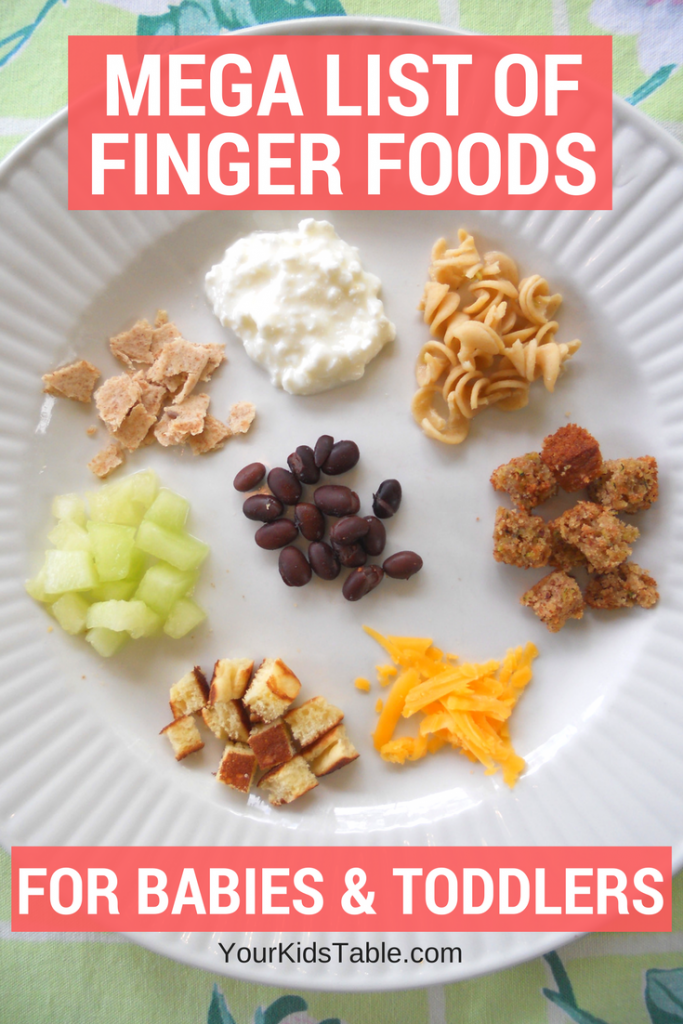 We go through the research on when to start solids—at 4 months or at 6 months—to help you make the best decision possible.
We go through the research on when to start solids—at 4 months or at 6 months—to help you make the best decision possible.
Starting Solids
Starting solids is one of the most fun and exciting milestones that we get to experience with our babies during the first year. But when to actually start a baby on solid foods, and which foods to go with, can be a little controversial.
And the advice can seem to change depending on who you ask. Many families start at 4 months, and many wait until 6. There’s no one right answer, but there are some factors to consider.
We’ll cover them below to help you make an informed decision that works for your family.
Starting Solids at 4 Months
The American Academy of Pediatrics recommends waiting to start solids until a baby is 6 months, and to go with wide variety of foods, introduced one at a time. But many pediatricians still say it’s okay to start rice cereal at 4 months.
If your pediatrician recommends this at the 4 month check up, ask their thoughts on the recommendation from the AAP.
Newer research, as written about in the book First Bite, also suggests starting closer to 4 months, but with a wider range of flavors to take advantage of a window of greater flavor acceptability in younger babies. It’s thought that by introducing a lot of flavors early on, you might be able to ward off picky eating in toddlerhood.
I am not convinced that there’s that direct of a correlation since most kids go through a very normal phase called neophobia when they are more fearful of new foods during the ages between 2-6. And that happens to kids no matter how they were introduced to food.
But, it is interesting to know that the thoughts on exactly when to start solids is a little more fluid than many of us might have assumed.
TIP: Read more on the phase of neophobia for the full information.
Starting Solids at 6 Months
Megan McNamee MPH, RDN, CLT is a Registered Dietitian Nutritionist specializing in pediatric nutrition and runs Feeding Littles. She’s also an expert in helping parents start solids and she gives such helpful advice for how to know when your baby is ready to start solids.
She’s also an expert in helping parents start solids and she gives such helpful advice for how to know when your baby is ready to start solids.
She recommends that we pay attention to these readiness signs:
- How well they can sit up on their own.
- How good their head control is.
- Whether they show interest in food when sitting at the table.
- How they sit when they’re in the highchair—can they sit upright without being extensively propped up?
TIP: These markers look at a broader context of the child’s development than just age, and can give you more information when deciding when to start.
Which are the best foods for starting solids?
For most babies, and according to the American Academy of Pediatrics, it doesn’t really matter which foods you start with as long as they’re whole foods without added salt or sugar.
You can start with single-grain baby cereals like Baby Rice Cereal or Baby Oatmeal, or go with fruits or vegetables, either as purees or BLW style foods.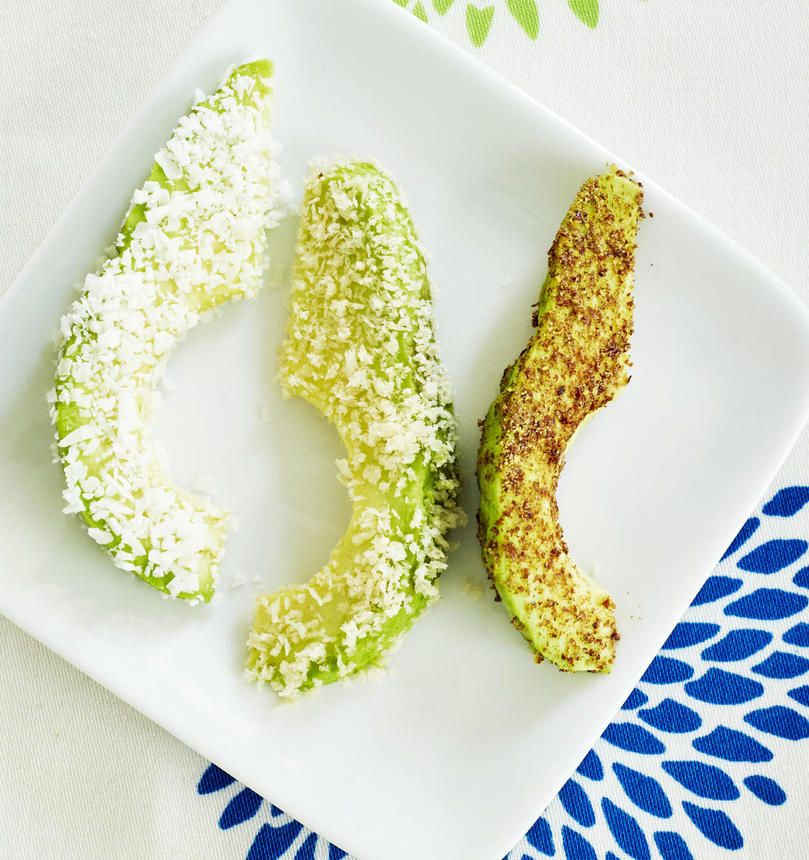
Babies are born with a preference for sweet foods, but that doesn’t mean you need to avoid fruits or just offer veggies to start. Aim to do a mix of flavors! We like banana, avocado, sweet potato, pureed peas, butternut squash, and pureed fruits.
And you can introduce meat, which is a great source of iron and zinc and are more readily absorbed than from plant-based sources.
TIP: This baby food introduction chart is a great month-by-month resource on which foods are great to offer during baby’s first year.
Starting Solids: Purees
Purees are an easy, nutritious option to start solids. You can use store-bought baby food or go with homemade purees. There are so many No-Cook Baby Food options that are fast and simple, and each stores well in the freezer, too.
Typically, you would start with one meal a day, then gradually work up to two meals, then three with the goal of being at at least three meals by the time baby turns one. (Many kids are having three meals and two snacks by age one, but it may depend on how many bottles or breastfeeding sessions, and generally their unique hunger level.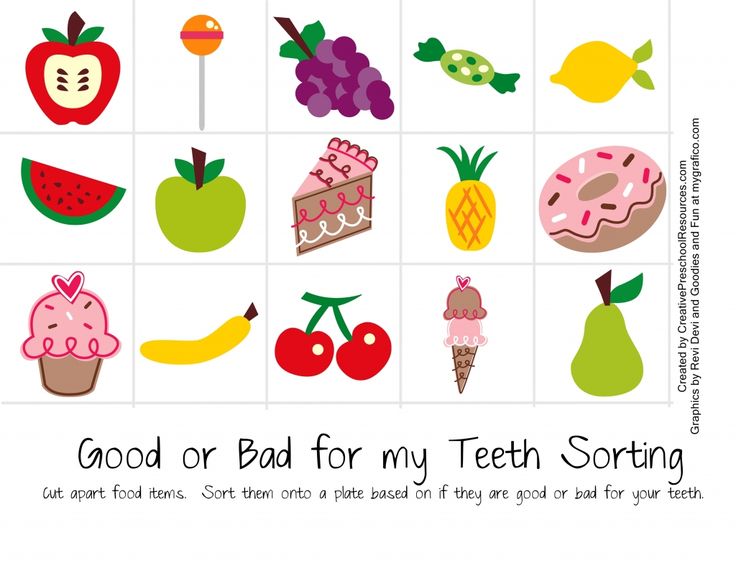 )
)
Babies vary widely in their eagerness to eat solids and may or may not be interested. Offer food when baby is rested and has a full tummy from their milk feeding as it will take them time to connect the dots between this new solid food and its ability to satisfy their hunger.
Let baby take the lead on the amount of food they eat and stop the meal when they close their mouth, turn away from the spoon, or start to fuss. You can even put some of the puree onto a spoon and offer it to baby to feed themselves.
First Puree Recipes to Try
Here are some simple purees that work well to start solids.
Favorite Sweet Potato Baby Food
You can serve this as wedges, a thick mash, or a thinner puree to your baby or toddler. (Adults will love the wedges, too!)
Get the recipe
Banana Puree Baby Food
Use a ripe banana with at least some brown spots for the best flavor in this puree.
Get the recipe
Best Apple Puree (with Flavor Combinations + Storage Tips))
There’s no one right serving size for every child, so start with a smaller amount and offer more as indicated by baby. When they turn their head or close their mouth, end the meal—it’s usually pretty obvious when they want to be done!
Get the recipe
Easy Pear Puree (Plus Easy Storage Tips)
Use ripe pears—they should give just a little to the touch and smell like a pear—for the best flavor in this puree. Some babies may want a few spoonful, some a bowlful. Follow baby’s cues to determine the right amount for them.
Get the recipe
Quinoa Baby Food (Easy Baby Cereal)
Transform nutrient-rich quinoa into a delicious baby food—with options for older kids and parents to share it—using this simple method. (Find flavor variations and storage tips too.)
(Find flavor variations and storage tips too.)
Get the recipe
Easy Carrot Baby Food (Puree and BLW-Syle)
Turn fresh carrots into a simple, nourishing baby food for baby with this easy method to make Carrot Puree. Read the Notes for additional flavor options and storage information.
Get the recipe
Starting Solids: Baby Led Weaning
The feeding approach known as “baby led weaning” or “BLW” for short, is a style of feeding infants that has become increasingly popular over the past decade. It allows babies to feed themselves right from the start with food that is easy to hold in their hands—or foods offered on preloaded spoons.
The food is typically offered in thick finger-size pieces so baby’s little hand can hold it securely. And the foods are soft and easy to squish between your fingers for a low risk of choking.
This option has the benefit of allowing you to, very often, share the food that you’re making for the rest of the family with baby with simple modifications.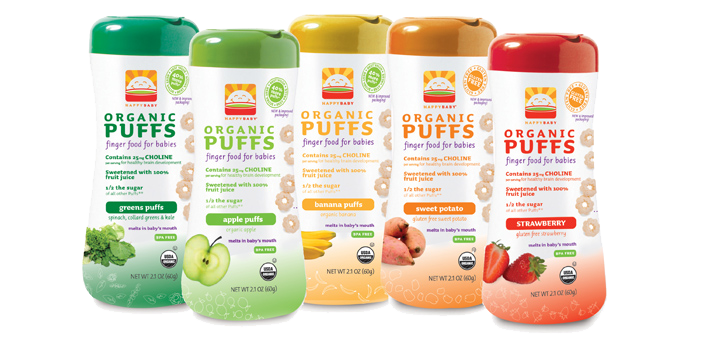
(I love this method, but want to add that there can be so much shaming online if a family decides not to go with BLW. There is no one right way to feed a family. You can do purees and BLW-style foods. BLW is not magic and it can be incredibly stressful for some people. Every family has a unique set of circumstances and we all need to judge each other a little less.)
My full Guide to Baby Led Weaning has the complete information on using this approach.
First BLW-Foods to Try
Here are some easy and nutritious options to start baby-led weaning.
Ultimate Guide to Baby Led Weaning (and Best First Foods)
Below are some of the best first foods to start baby led weaning. Choose one at a time to offer and make sure that the fruits are ripe so that they are soft and taste good. (Nutrition will vary based on the specific foods you offer.)
Get the recipe
Easy Egg Yolk Puree (with BLW option)
This is an easy method to introduce eggs to baby, whether they’re starting solids on purees or with the baby led weaning approach. Adjust the number of eggs up or down as you like.
Adjust the number of eggs up or down as you like.
Get the recipe
Best Broccoli for Babies (Puree and BLW-Style)
Learn how to make nutritious Broccoli Puree and a super easy method for baby led weaning style broccoli. Both start with the same technique, so you can do either (or both!).
Get the recipe
Favorite Zucchini Baby Food
Learn the easiest way to make flavorful Zucchini Baby Food—with options for baby-led weaning zucchini and also zucchini puree—with one simple method. Plus: Find storage and serving tips.
Get the recipe
Easy Roasted Carrot “Fries”
These baked carrot fries are a simple side to go with burgers or chicken and pair perfectly with ketchup.
Get the recipe
The Best 2-Ingredient Pancakes (Baby and Toddler Approved)
This recipe makes one small batch of super tender 2-Ingredient Pancakes.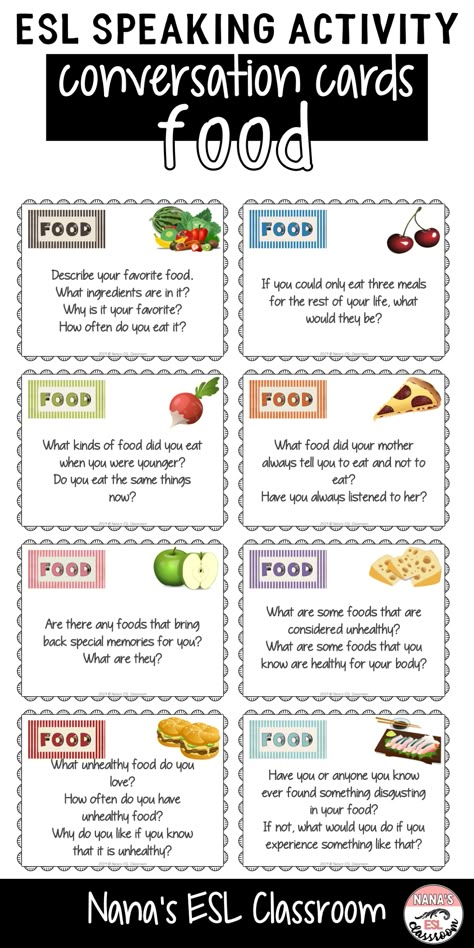 It usually makes 1-2 little-kid-size servings. To make more, simply double the recipe. These are delicate pancakes with a texture that's sort of custardy like French toast, so be gentle when flipping them. See the NOTES at the bottom for the flavor variations.
It usually makes 1-2 little-kid-size servings. To make more, simply double the recipe. These are delicate pancakes with a texture that's sort of custardy like French toast, so be gentle when flipping them. See the NOTES at the bottom for the flavor variations.
Get the recipe
How many meals should I offer baby each day?
You can start with one meal a day, then gradually increase as baby becomes more interested in food and it works naturally with your schedule. There’s no one right way for every family, but generally aim to reach 3 meals (and possibly even two snacks if it works with your schedule) by the first birthday.
Refer to baby feeding schedules for more information and options.
I’m worried about choking—what should I do?
The best thing would be to take an infant CPR course so you feel armed with information. You can also read this post on Toddler Choking Hazards, which will give you all of the info you need about foods to watch out for an avoid to keep mealtimes safe and enjoyable.
Generally, if the food you offer is soft and easy to squish between your fingers, baby is sitting down and has water to drink throughout a meal, you can lower choking risks.
product we love
Infant Feeding: The Baby-Led Way
This course from Feeding Littles is the gold standard of safe self-feeding from the start.
Learn More
When can baby have peanut butter?
Experts advise introducing it soon after you start solids—assuming there is no history of severe food allergies in the family and baby has not had eczema. Read more about introducing peanut butter here and find my favorite peanut butter puree!
When can baby have milk?
Babies should have formula and breastmilk as their primary food and water with meals once they start solids. The American Academy of Pediatrics recommends that we wait to introduce cow’s milk until baby has turned one since, unlike the proteins in dairy like yogurt and cheese, the ones in cow’s milk are harder to digest.
Cow’s milk also contains a large amount of proteins and minerals, which can stress a baby’s kidneys or cause iron-deficiency anemia if given in large quantities. This is in the context of potential issues if you were to put cow’s milk to a baby bottle or sippy cup.
You can use an unsweetened nondairy milk in the meantime.
Image via ShutterstockWhen can baby have water?
When you start offering foods, you can offer a little water along with it to help baby get into the habit of drinking water and to make foods easier to eat. Read more about babies and water—and why we want to wait until 6 months to start it.
Babies and Salt
It’s a good idea to review the recommendations on avoiding salt for babies—and how to do it without making yourself crazy. You can read my full post on babies and salt here.
When can baby have honey?
Honey is a no-go for kids under age one because it can cause a very rare, but serious, condition called infant botulism. While most foods not recommended for babies are due to choking hazards or allergy concerns, the deal with honey is completely different. And we need to avoid it raw and cooked.
While most foods not recommended for babies are due to choking hazards or allergy concerns, the deal with honey is completely different. And we need to avoid it raw and cooked.
Learn more about babies and honey and know that you can add a lot of flavor to foods using fruit purees like applesauce or mashed banana.
Best Early Finger Foods for Babies
Once a baby reaches around 9 months of age, they will have the ability to pick up smaller pieces of foods with their fingers. At that point, you can start offering more finger foods. Aim for them to be very easy to chew—you should be able to squish them between your fingers easily.
TIP: Find my full list of the best Early Finger Foods for easy reference.
Which highchair is best for a baby?
You’ll want a highchair that allows a baby to sit upright, rather than slouched back in a reclining position which could be a choking hazard. It’s also a good idea to choose a highchair that has a food rest which can promote proper body positioning while sitting.
Two of our favorites are the Stokke Tripp Trapp, which I’ve had for 7 years now and can say that it’s incredibly durable and easy to clean. We also love that it transforms into a stool once the kids are too big for the highchair components. It’s totally worth the price!
Another highchair that’s great for babies is Keekaroo Height Right Kids Chair that has nice cushions for added support.
TIP: Find my full list of favorite Highchairs for Babies and Toddlers for more information.
Learn More About Starting Solids
For my full information on starting solids. check out my Yummy Baby Food ebook. It takes you through the first year, with step-by-step advice, recipes, and tips in an easy to use digital format.
Related Recipes
I’d love to hear your feedback on this post, so please comment below to share.
This post was first published October 2018.
Page not found
How to retire earlier
l for many years. But there was nothing to receive
The package was stuck at customs. What to do?
Everyone is interested
See all
Spending diaries
Investments for beginners
Financial pillow
Benefits from the state
How to rent an apartment 9002 7
pay off a loan
Spending diaries
Investments for beginners
Financial cushion
State benefits
How to rent an apartment
How to repay a loan
See all
How to use Midjourney to generate drawings and make requests correctly
How much coins are in your wallet
23.6
Which countries are open for tourists from Russia
Where can I leave Russia
How to get compensation for the Soviet contribution
How to draw up a contract for the sale of a car
30 estates near Moscow that you should visit
How to apply for a donation for a share
Shorts
53 15.03.23
Best for six months
See all
How to calculate maternity benefits
How to become an honorary blood donor
The neural network draws anime: how to process photos using Different Dimension Me
.22
How I was cheated on 15 000 ₽ with Avito-delivery
0003
Where can I leave Russia
How much are the coins in your wallet
3
007Suspicious: mass SMS with activation codes from different services
Unified allowance for children under 17 in 2023: conditions, amount of payments
0006
How to register a car in the traffic police
Rules for entry into Turkey for Russians in 2023
help
See all
Plant greenery at home
Defeat burnout
3
Improve life with Excel
Earn on stocks
25. Shorts Everyone is interested See all 9How to rent an apartment 003 Understand charity
Travel safely
Earn on a credit card
Protect yourself from scammers
Do not go broke on health
Sort garbage
Drive a wheelbarrow
Get a dog
Be self-employed
Page not found
12 cheapest cities in the world to live in
How the summons should arrive under the new rules
Buy a new building: how to choose a reliable developer
How to repay the loan
Spending diaries
Investments for beginners
Financial cushion
Benefits from the state
How to rent an apartment
How to repay the loan
See all
How much are the coins in your wallet
03/13/23
30 estates near Moscow, which you should visit
0004
Where can I go from Russia
0007
Poor medicine and difficulties with socialization: why we decided to leave Canada
Parcel stuck at customs. What to do?
How to retire earlier
How a man came for a pension that he had not taken off for many years. But there was nothing to receive
Which countries are open for tourists from Russia
See. 7
How to become an honorary blood donor
How to calculate maternity payments
Suspicious: mass SMS with activation codes from different services
Where can I leave Russia
The neural network draws anime: how to process photos using Different Dimension Me
2.22 How to choose the right condom: detailed instruction
Unified allowance for children under 17 in 2023: conditions, payment amount
0003
How to use Midjourney to generate drawings and write queries correctly
How to register a car with the traffic police 9013.20003
What is a credit history
How to receive compensation for the Soviet deposit
Rules for entry into Turkey for Russians in 2023
How I was deceived for 15,000 rubles with "Avito-delivery"
How I ordered a car from Japan
006
How to get a US green card
Courses will help
See all
Green the house
Choose apartment
Improve life with Excel
Earn on shares
1
Start investing
Understand charity
Travel safely
Earn on a credit card
6
14.0802 0002 Do not miscalculate with a mortgage
Protect yourself from scammers
Do not go broke on health
25.
Sort garbage
Drive a wheelbarrow



